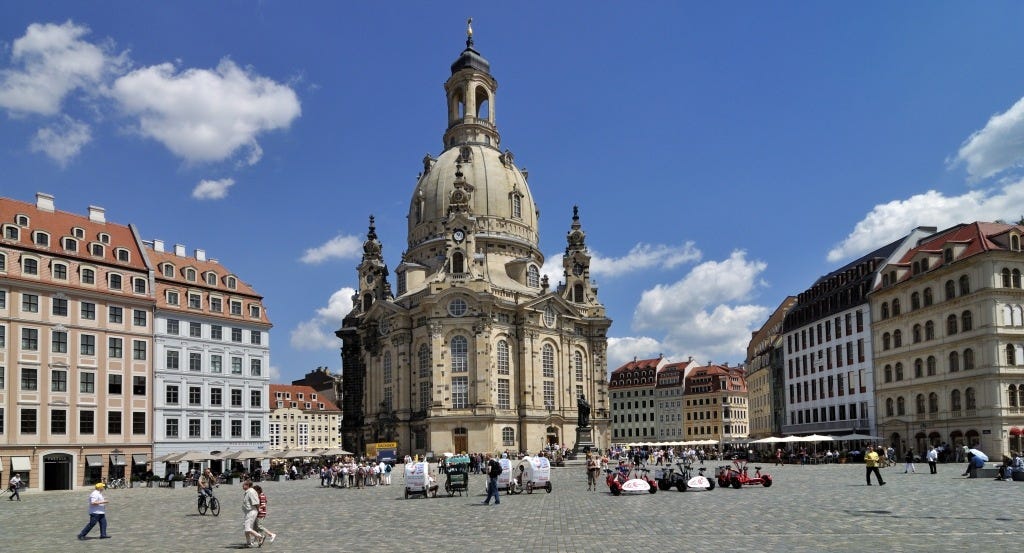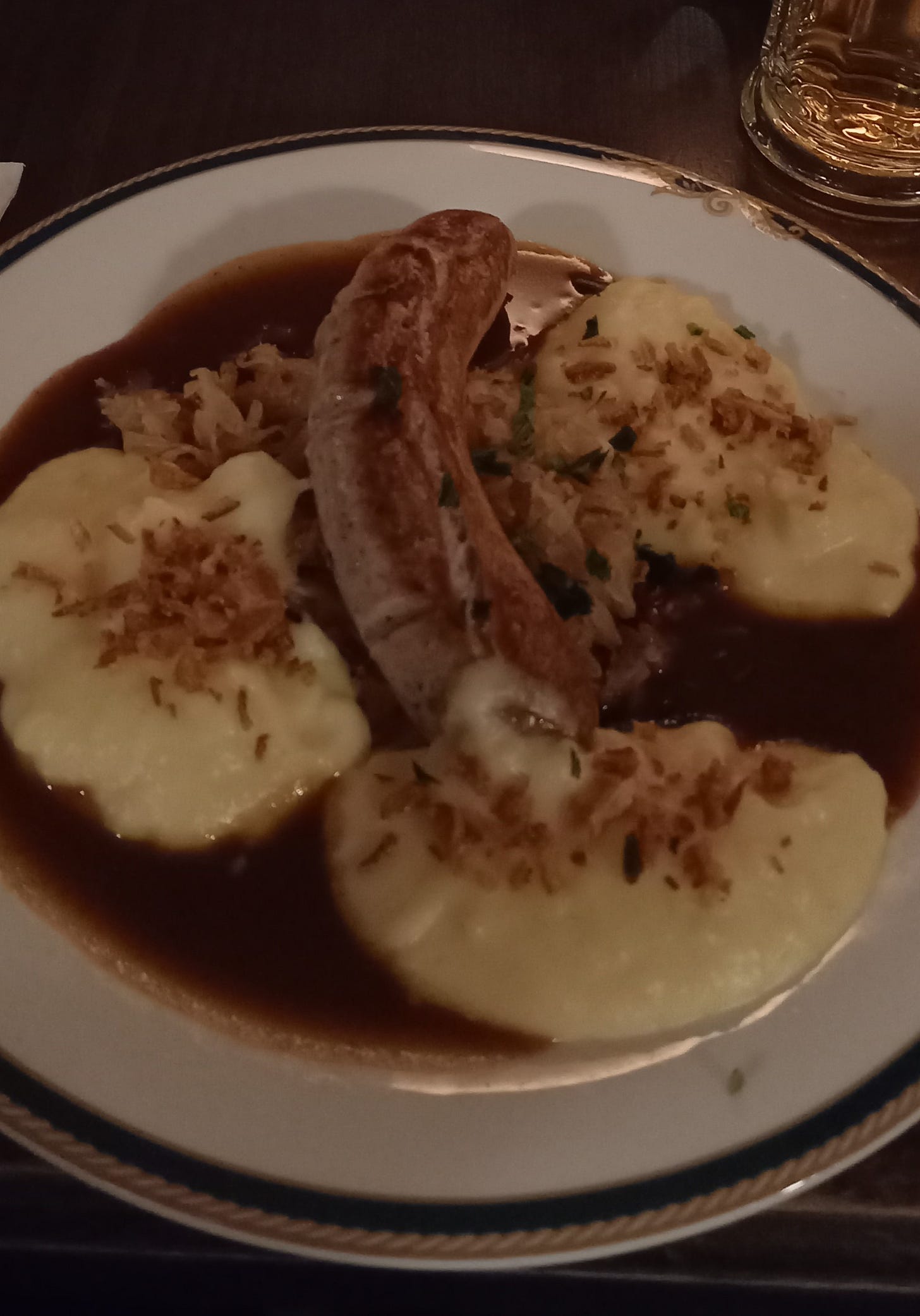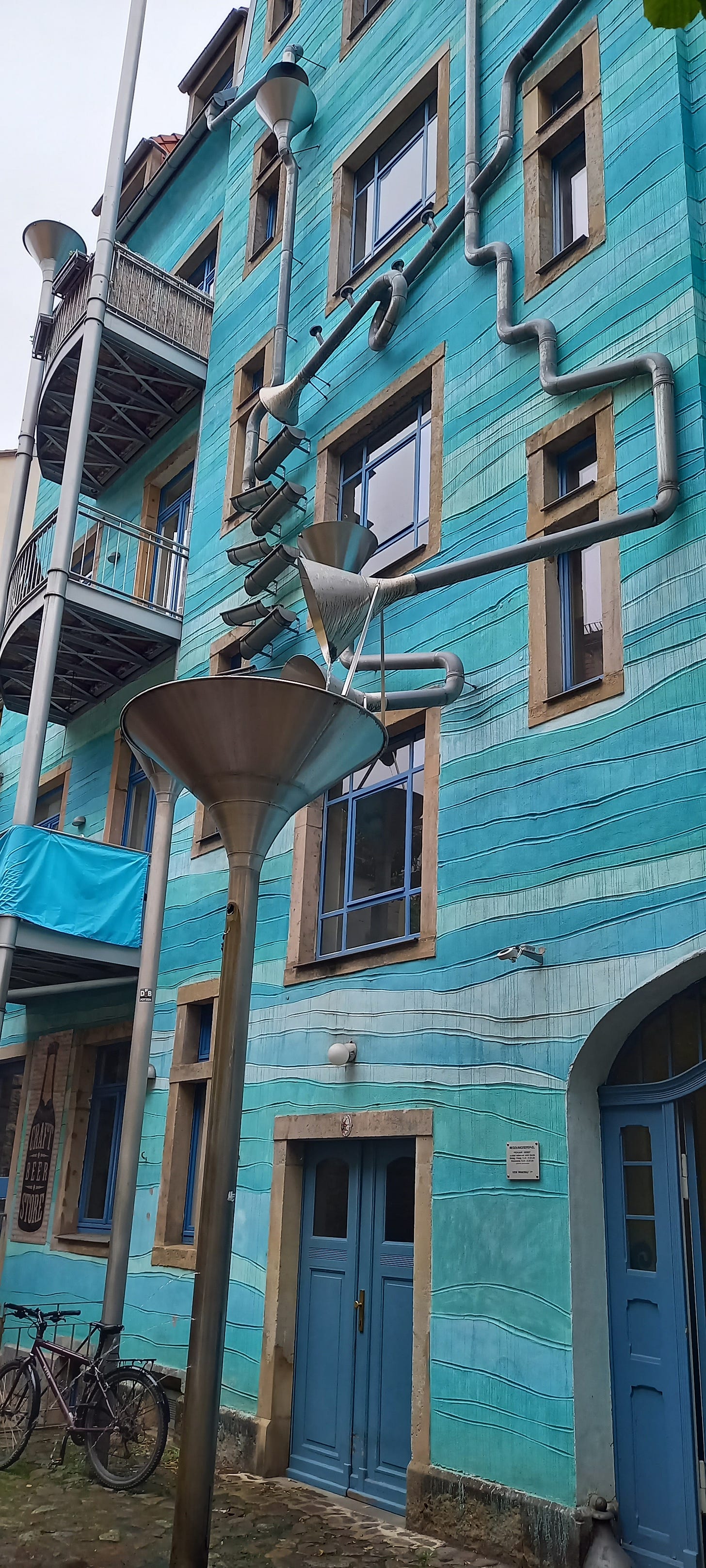Invited recently to join a bunch of intrepid and seasoned carousers on a trip to Dresden, I thought, What could there be to see? The Allies did a pretty comprehensive job of fire-bombing the city into ashes.
Over two days in February 1945, 800 British and US Army aircraft dropped more than 3,400 tons of explosives over the cultural jewel of Saxony. The firestorm they created set the city ablaze, generating hurricane-force winds and temperatures near 3,000 degrees Fahrenheit. It burned 1,600 acres (6.5 km2) of buildings and around 25,000 men, women and children. Those sheltering in basements suffocated as the city above them was consumed by flames. Novelist Kurt Vonnegut, an American POW in Dresden during the raid, depicted his experience in Slaughterhouse Five, his classic anti-war novel.
After the war, the East Germans strove to rebuild some of Dresden's former landmarks, such as the Saxony state opera house and the Zwinger Palace. But many of the ruins remained as an anti-war memorial, the Lutheran Frauenkirche, a baroque church completed in 1743, in particular.
Then following the fall of the Berlin Wall, the reunified German government to began to rebuild in earnest, through the financial support West German states were obliged to make to East Germany.
It’s an astonishing achievement. If you were unaware of Dresden’s recent history, you would never guess you weren’t wandering through a centuries-old city centre.
You can hardly see the joins, except where, as in the Frauenkirche, stones recovered from the ruins were deliberately incorporated into the restorations and left uncleaned to make it clear just how comprehensively the buildings were destroyed. In the Frauenkirche, around 4,000 original stones were put back into its restoration.
Dresden is worth visiting for the Green Vault alone. It’s a sequence of private treasure chambers rebuilt in the original style and housing one of Europe’s largest treasure collections, the royal collection of Augustus the Strong. He decided in 1723 that it should be open to the public to enjoy. Older than the British Museum, you won’t find any photographs of the individual pieces. They are far too valuable - approximately 3,000 pieces of jewellery, with a huge collection of diamonds and other enormous gemstones, and on display without showcases are works in gold, amber, and ivory, and sumptuous silver dinnerware. Do click on the panoramic walk around the rooms in this link.
Dresden’s reconstruction gives hope to anyone wondering how on earth Ukraine could possibly recover from the unmitigated and devastating ravages of Russia’s continuing assault upon it.
And if you’re a fan of the pig, Dresden will feed you plenty. My own capacity for eating pork is limitless.
The historic Alstadt (the Old Town) lies on the left bank of the River Elbe. The administrative district of the city, Innere Neustadt (Inner New City), sitting on the right bank, fared better. It may call itself New, but it’s filled with old nooks and crannies, lived in by Dresden’s young artists and entrepreneurs. This is where probably the world’s most ornately beautiful and comprehensively stocked cheese shop, the Dresden Molkerei Gebrüder Pfund, can be found.
Its walls are covered in original hand-painted tiles by Villeroy & Boch, installed in 1892. Two doors down is Bürstenmanufaktur, a shop specialising in brushes for every conceivable job, household, artistic and cosmetic, and some whose purpose is inscrutable.
Hidden down alleyways are houses occupied by artist communes and shops, one whose pipes play tunes when rainwater runs down them, another covered in gold scales.
Locals gather at coffee shops to eat patisserie. German and Austrian cakes are not my favourites, veering away from the flighty towards the solidly sensible. Dresden’s famous stollen is a dense fruit bread of nuts, spices and candied fruit coated with powdered sugar that slumps onto the stomach. So I have Barry, part of our Dresden party, to thank for telling me about Plum Torte which feels a little German and turns out to be not only a breeze to make but almost as light as one.
Apparently, it’s a New York Times classic, the recipe published every September from 1983 until 1989 as the best of the plum season’s bounty reached the shops. Then, it was decided that was enough and the recipe would be printed for one last time. The editors thought they could mitigate the expected uproar by printing the recipe in a larger type than usual and surrounded by a broken line to indicate the recipe should be cut out and kept. To no avail. Readers were furious, and said so in many full postbags. For them, the torte represented the bittersweet period between the end of summer and the arrival of autumn. It does just that, and reminds me of a rewarding visit to Dresden.
Makes 8-10 slices
I added a teaspoon of almond essence to the batter emphasise the plums’ flavour. I also think you could make this very successfully during the summer with fresh apricots.
150g/¾ cup sugar (the original recipe used 1 cup)
110g/½ cup unsalted butter, softened
120g/1 cup unbleached flour, sifted
1 teaspoon baking powder
Pinch of salt
2 eggs
10-12 purple plums, halved and pitted
Sugar, lemon juice and cinnamon, for topping
Heat oven to 175C/350F degrees.
Cream the sugar and butter in a bowl. Add the flour, baking powder, salt and eggs and beat well.
Spoon the batter into a well-greased springform pan of 20, 22, 25cms/8, 9 or 10 inches. Place the plum halves skin side up on top of the batter. Sprinkle lightly with sugar and lemon juice, depending on the sweetness of the fruit. Sprinkle with about 1 teaspoon of cinnamon, if you like cinnamon.
Bake 50-60 minutes, checking it’s cooked after 50 minutes by plunging a toothpick into the cake to test that it comes out clean. Remove and cool. Eat lukewarm or cool with cream.
To serve the torte from frozen, defrost and reheat it briefly at 150C/300F degrees.
To freeze, double-wrap the torte in foil, place in a plastic bag and seal.















Are those fancy gutters musical? I think I've seen similar elsewhere...
Dresden has been on my bucket list for a long time, one of the few parts of Germany with which I do not have at least a nodding acquaintance. Interesting and informative as ever, and the recipe very welcome - I am addicted to Zwetschgenkuchen!